What is a thermistor and a posistor and where are they used
A thermistor is a semiconductor component with a temperature-dependent electrical resistance. Invented in 1930 by scientist Samuel Reuben, this component is still widely used in technology.
Thermistors are made of different materials, temperature coefficient of resistance (TCR) which is quite high — significantly superior to metal alloys and pure metals, that is, from special, specific semiconductors.
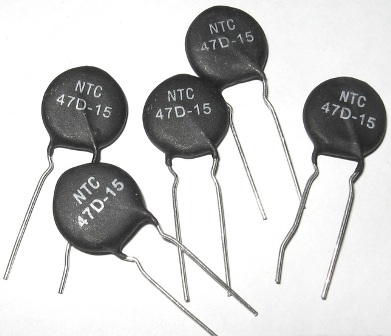
Directly, the main resistive element is obtained by powder metallurgy, processing chalcogenides, halides and oxides of some metals, giving them different shapes, for example, in the form of discs or rods of different sizes, large washers, medium tubes, thin plates, small beads , with sizes from a few microns to tens of millimeters...
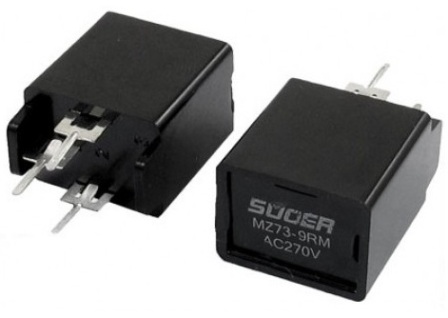
By the nature of the correlation between the resistance of the element and its temperature, they divide the thermistors into two large groups — posistors and thermistors.Posistors have a positive TCS (for this reason, posistors are also called PTC thermistors) and thermistors have a negative TCS (that is why they are called NTC thermistors).
Thermistor — temperature-dependent resistor made of semiconductor material with a negative temperature coefficient and high sensitivity, posistor — temperature-dependent resistor with a positive coefficient. Thus, as the temperature of the body of the posistor increases, its resistance decreases, and as the temperature of the thermistor increases, its resistance decreases accordingly.
Materials for thermistors today are: mixtures of polycrystalline oxides of transition metals such as cobalt, manganese, copper and nickel, type IIIIBV compounds, as well as doped, glassy semiconductors such as silicon and germanium and some other substances. Notable are barium titanate solid solution posistors.
Thermistors can be classified as:
-
Low temperature class (operating temperature below 170 K);
-
Medium temperature class (operating temperature from 170 K to 510 K);
-
High temperature class (operating temperature of 570 K and above);
-
A separate high-temperature class (operating temperature from 900 K to 1300 K).
All these elements, both thermistors and posistors, can work in different climatic external conditions and under significant physical external and current loads. However, under severe thermocycling, their initial thermoelectric characteristics, such as nominal room temperature resistance and temperature coefficient of resistance, change over time.
There are also combined components, for example, indirectly heated thermistors... The housings of such devices contain the thermistor itself and a galvanically isolated heating element that sets the initial temperature of the thermistor and, accordingly, its initial electrical resistance.
These devices are used as variable resistors controlled by the voltage applied to the heating element of the thermistor.
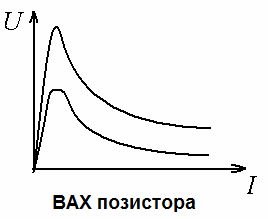
Depending on how the operating point of the I — V characteristic of a given component is chosen, the operating mode of the thermistor in the circuit is also determined. And the I — V characteristic itself is related to the design characteristics and the temperature applied to the component's housing.
To control temperature fluctuations and compensate for dynamically changing parameters, such as the current flowing and the applied voltage in electrical circuits, which change after a change in temperature conditions, thermistors are used with an operating point set on the linear section of the I — V characteristic .
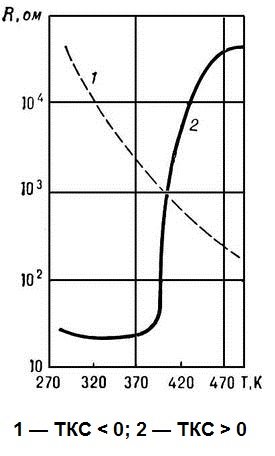
But the operating point is traditionally set on the falling section of the I — V characteristic (NTC thermistors) if the thermistor is used, for example, as a starter, time relay, in a system for tracking and measuring the intensity of microwave radiation, in fire alarm systems, thermal control, in installations for controlling the flow of bulk substances and liquids.
Today's most popular mid-temperature thermistors and posistors with TCS from -2.4 to -8.4% at 1 K... They operate over a wide range of resistances from ohms to megohms.
There are posistors with a relatively low TCR of 0.5% to 0.7% at 1 K made on a silicon basis. Their resistance changes almost linearly.Such posistors are widely used in temperature stabilization systems and in active cooling systems of power semiconductor switches in various modern electronic devices, especially in powerful ones. These components fit easily into schematics and do not take up much board space.
A typical posistor is in the form of a ceramic disk, sometimes several elements are installed in series in one case, but more often in one variant in a protective enamel coating. Posistors are often used as fuses to protect electrical circuits from overvoltage and current, as well as temperature sensors and self-stabilizing elements, due to their unpretentiousness and physical stability.
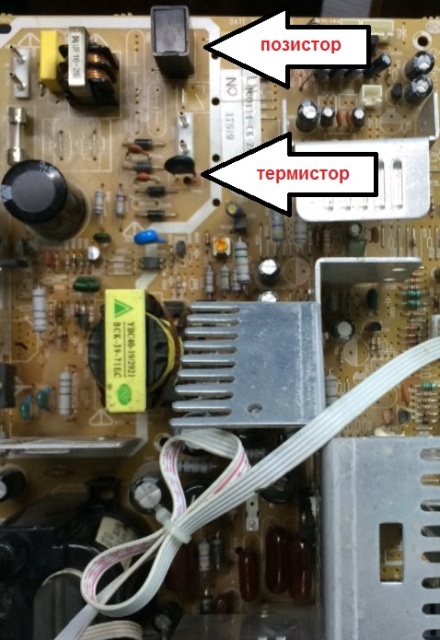
Thermistors are widely used in many areas of electronics, especially where precise control of the temperature process is important. This applies to data transmission equipment, computer technology, high performance processors and high precision industrial equipment.
One of the simplest and most popular examples of thermistor applications is effective inrush current limiting. At the moment, the voltage is supplied to the power supply from the mains, extremely sharp capacitor charge significant capacitance and a large charging current flows in the primary circuit, which can burn the diode bridge.
This current is here and it is limited by the thermistor, that is, this circuit component changes its resistance depending on the current passing through it, because according to Ohm's law, it heats up. The thermistor then recovers its original resistance, after a few minutes, as soon as it cools down to room temperature.
